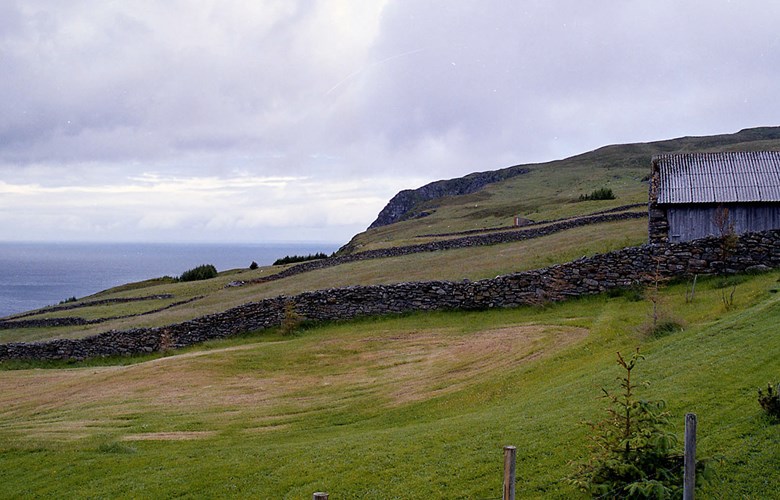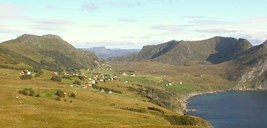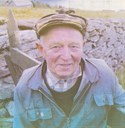Old settlement
The village of Kvalheim is situated in the northern part of the bay of Kvalheimsvika, facing the ocean on the western side of the island of Vågsøya. This area has been settled for a long time. There is a reference to the farm in "Bjørgvin Kalvskinn". This is a cadastre from the 14th century, a record of the properties and income of the churches in the diocese. According to the 1900 census, 188 people lived on the two farms called "ytre" (outer) and "indre" (inner) Kvalheim.
Each generation did their part.
On the two Kvalheim farms there are miles of stone walls criss-crossing the beautiful village of Kvalheim. Above all, they are a testimony to the strong resolution of many generations to contribute to enlarging the cultivated area, thus making it easier to make a living. Each generation did their part. For every square yard of cultivated land added, the stone walls became bigger and longer. The stones taken from the ground served as walls and fences between the cultivated land and the outlying fields. Besides, this was the only practical way of getting rid of enormous quantities of stones when they were clearing the stony ground for cultivation.
Mostly autumn work
This type of cultivating the soil came to an end in the 1940s. It coincided with many other changes within agriculture. Erling Kvalheim, born in the 1920s, remembers well that between the ages and 12 and 15, he had to help his grandfather in clearing the stony ground to make hayfields and better pastures. This work was mostly carried out in the autumn. The art and knowledge of building these stone walls were handed down through the generations. Today the stone walls stand out like beautiful sculptures in the landscape, formed by many generations.
Protected by law
Today the stone walls in the village of Kvalheim are protected by law. They still serve the function of keeping the animals fenced in and away from the hayfields. In some places weather and wind have badly damaged the walls, but in most places the walls have withstood the effect of the elements. Across the ocean, on the Faroe Isles, on Shetland, and in Scotland, people cleared the ground and put up beautiful grey stone walls in the same way and for the same purpose as at Kvalheim.



